Kabir Das
Unveiling the Mysteries of Kabir Das
Kabir Das, the poet and saint, was born in Kashi (Varanasi, Uttar Pradesh) around the middle of the 15th century. His life remains shrouded in ambiguity with conflicting accounts, varying viewpoints, and numerous tales surrounding his biography. The oldest sources on Kabir include the Adi Granth and the Bijak. Other texts such as Khajinat al-Asafiya, Dabistan-i-Tawarikh by Mohsin Fani, and Nabhaji by Bhakta Mal also provide insights into his life.
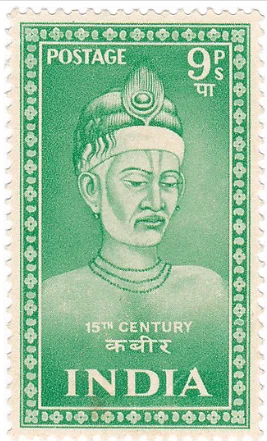
Source: Wikimedia Commons
The Miraculous Birth and Divine Proclamation of Kabir Das
Kabir’s conception is considered to have occurred magically. His mother, a widow and a pious Brahmin, accompanied her father to visit a well-known ascetic. Moved by their devotion, the ascetic blessed her and prophesied that she would soon give birth to a son. After Kabir was born, his mother abandoned him to avoid embarrassment due to being unmarried. The Muslim weaver’s wife Nima then adopted young Kabir. In another version of the story, the ascetic assured the mother that the birth would happen in a unique way, and indeed, Kabir was born directly from his mother’s palm. He was subsequently adopted by the same Nima in this version of the tale as well.
The newborn astonishingly declared in a firm voice, “I was not born of a woman but manifested as a boy…” Others began to mistrust and questioned Nima about the infant. He proclaimed, “I am without skin, blood, or bones. I disclose the Word, or Shabda, to men. I am the most exalted being.”
Legends and the Name “Kabir Das”
There are certain parallels between Biblical mythology and the story of Kabir. Investigating the concept of legends in general, it would be pointless to doubt the authenticity of these legends. Myths and fantasies do not form a part of everyday life. The destiny of the average man is obscurity. Supernatural occurrences and flowery stories are associated with extraordinary lives. These traditions show that Kabir was an exceptional human being and, therefore, a significant person, even if he was not born of a virgin.
In the era he lived, “Kabir” was an uncommon name. According to legend, a Qazi read the Qur’an multiple times to find a suitable name for the infant and bestowed upon him the name Kabir. The word Kabir means “Great,” and it refers to none other than the Almighty Allah.
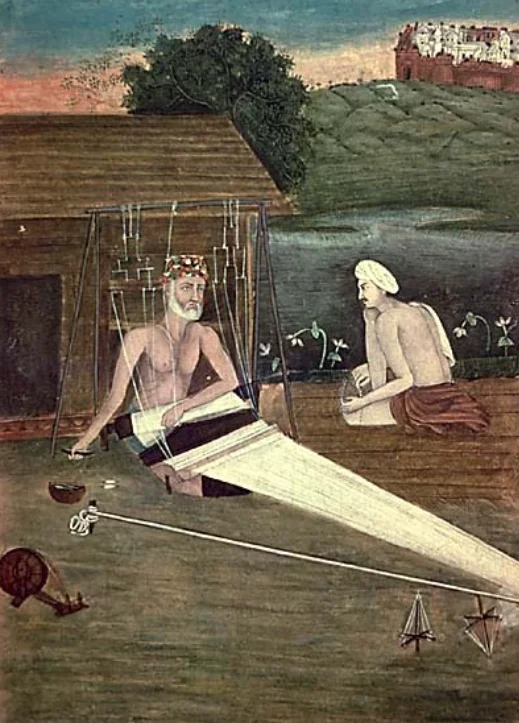
Source: Wikimedia Commons
Poetry
कबीरा तू ही कबीरु तू तोरे नाम कबीर।
राम रतन तब पाइए जब पहिले तजहिं सरीर।
You are the same, amazing are you, your name is Kabir.
Only when one renounces corporeal attachment can one find the diamond Ram.
In his poetry, Kabir refers to himself as a kori and julaha, terms that denote weavers as belonging to inferior castes. He did not fully identify with either the Muslim or Hindu communities.
जोगी गोरख गोरख करै, हिंद राम न उच्चारै
मुसलमान कहे एक खुदाई, कबीरा को स्वामी घट घट रहियो समाई।
Kabir never received formal education or training in weaving. Despite using many metaphors in his poetry, weaving was not his passion or occupation. His poems reflect his spiritual quest for Truth.
ताना बुनाना सभूं तज्यो है कबीर
हरि का नाम लिखि लियो सरीर।
Kabir has given up on weaving and spinning altogether.
Every part of Hari’s physique bears the mark of his name.
Influence, Education, and Personal Life
Kabir desired to become the disciple of the Varanasi-based saint Ramananda to fulfill his spiritual quest. He believed that he would receive initiation if he could decipher his teacher’s secret chant. Saint Ramananda used to visit a particular ghat in Varanasi frequently. When Kabir observed his arrival, he prostrated himself on the steps of the ghat. Ramananda struck him, prompting Kabir to exclaim in awe and utter the word “Ram.” Upon discovering the mantra, Kabir was accepted as a disciple by the saint.
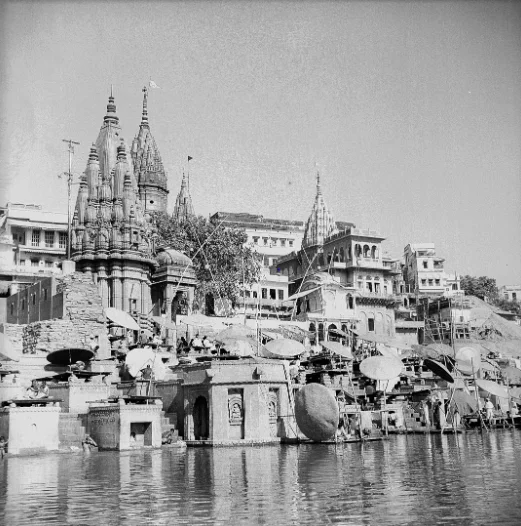
Source: Archaeological Survey of India
According to Khajinat al-Asafiya, Kabir was tutored by Shaikh Taqqi, a Sufi pir. His teachings and worldview reflect a strong Sufi influence.
Historical records suggest that Kabir grew up in the Varanasi neighborhood known as Kabir Chaura.
Kabir eventually married a woman named Loi, and together they had a son named Kamal and a daughter named Kamali. Some accounts suggest he may have married twice or not at all. While these details of his life remain unverified, his poetry provides insight into the ideology he promoted.
In the Dabistan of Mohsin Fani and the Ain-i-Akbari of Abul Fazl, Kabir is identified as a muwahid, or follower of one God.
Kabir’s Concept of God
In the preface to Prabhakr Machwe’s book “Kabir,” Prof. Hazari Prasad Dwived stated that although Kabir was not considered an avatar of Vishnu, he worshipped Ram as his devotee. According to Kabir, Ram transcends any particular form or attribute. His ultimate vision was of a single, absolute God beyond qualities, form, and existing beyond space, time, and causality. Kabir’s concept of God embodies happiness and wisdom, with the Word, or Shabda, being his deity.
जाके मुँह माथा नहीं
नहीं रूपक रैप
फूप वास ते पटला
ऐसा तत अनूप।
Whose essence is so faint as the scent of a flower, who has no head, face, or symbolic form?
Kabir was significantly influenced by Islamic monism and Upanishadic non-dualism. He drew guidance from the Vaishnava Bhakti tradition, which emphasized total devotion to God.
Kabir’s Critique of Rituals and Idolatry
One day, according to legend, Kabir filled his wooden cup with Ganga water and handed it to the Brahmin men bathing in the sacred stream to atone for their sins. They were quite irritated when a man from a lower caste offered them water. In response, he said, “If the Ganges water cannot purify my cup, how can I believe that it can wash away my sins?”
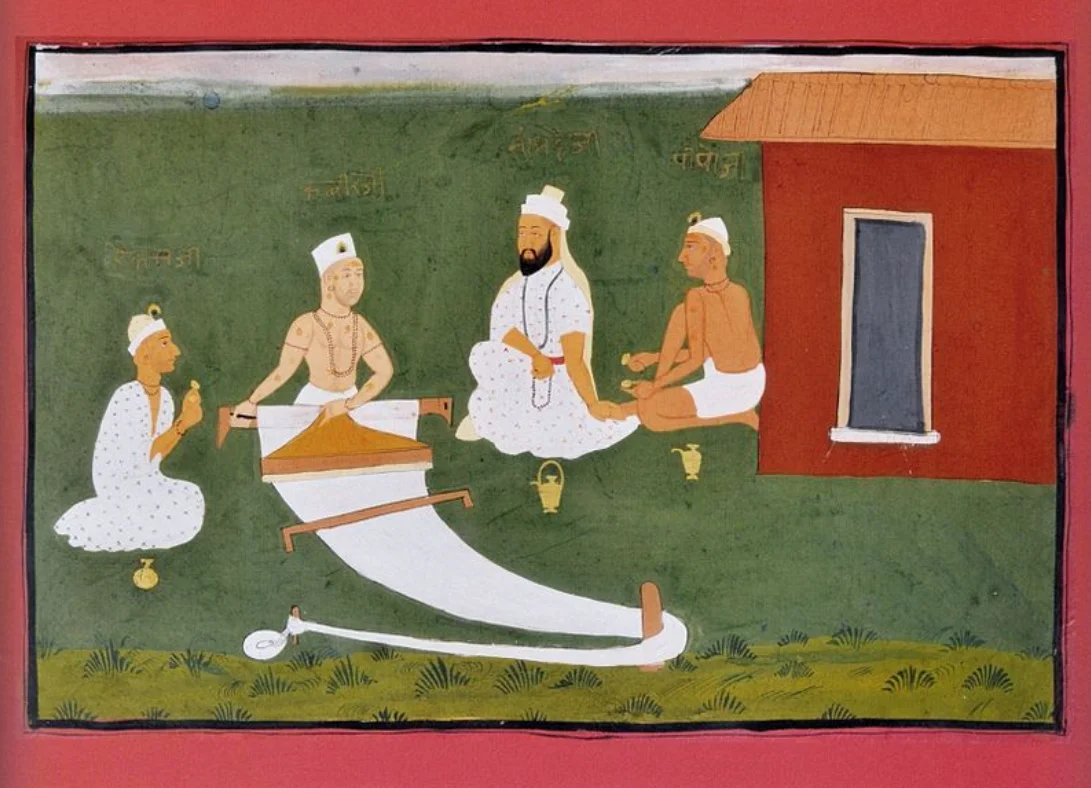
Source: Wikimedia Commons
Kabir condemned idolatry and criticized Muslims and Hindus for their pointless ceremonies, rituals, and customs, beyond caste. He taught that one can only approach God through total dedication.
लोग ऐसे बावरे, पहन पूजन जय
घर की चकिया कहे ना पूजे जेही का पीसा खाई
People flock to worship the stones because they are such idiots.
Why do they not worship the stone that grinds their food flour?
Legacy Through Poetry
Kabir’s poetry embodies each of these concepts. His poetry and spiritual experience intertwine closely. He did not consciously set out to be a poet. Through his poetry, he conveyed his spiritual quest, as well as his moments of ecstasy and suffering. Kabir is regarded as an unconventional poet by all accounts. During the 15th century, when Persian and Sanskrit dominated North India, he chose to write in a regional dialect. His poetry spans multiple languages, including Marwari, Hindi, Khari boli, Punjabi, Bhojpuri, Urdu, and Persian.
Although little is known about Kabir’s life, his poetry has endured. He remains renowned for his poetry. The endurance of the poems of a common man for millennia attests to their brilliance. Despite being passed down orally, Kabir Das poetry has endured due to its profoundly spiritual ideas and experiences, coupled with its straightforward language.
Impact and Influence
Many years after his passing, his poetry was committed to writing. He composed extended pads (songs) and two-lined dohas (couplets) that were set to music. Despite their straightforward language, Kabir’s poetry presents challenges in understanding due to the intricate symbolism it contains. His poems do not adhere to any set form or meter.
माटी कहे कुम्हार से तू क्यों रौंदे मोहे
एक दिन ऐसा आएगा मैं रौंदूंगी तोहे
The potter asks Clay, “Why do you stamp on me?”
I shall crush you when the time comes (after death)
Kabir’s teachings spiritually impacted numerous people and communities. Spiritual figures like Guru Nanak ji, Dadu of Ahmedabad (founder of the Dadu Panth), and Jiwan Das of Awadh (founder of the Satnami sect) all considered Kabir Das as their spiritual guide. Most of Kabir’s followers belong to Kabir Panth, also known as “the Path of Kabir,” viewing him as a guru who guides them towards redemption. Kabir Panth represents a spiritual philosophy rather than a distinct religion.
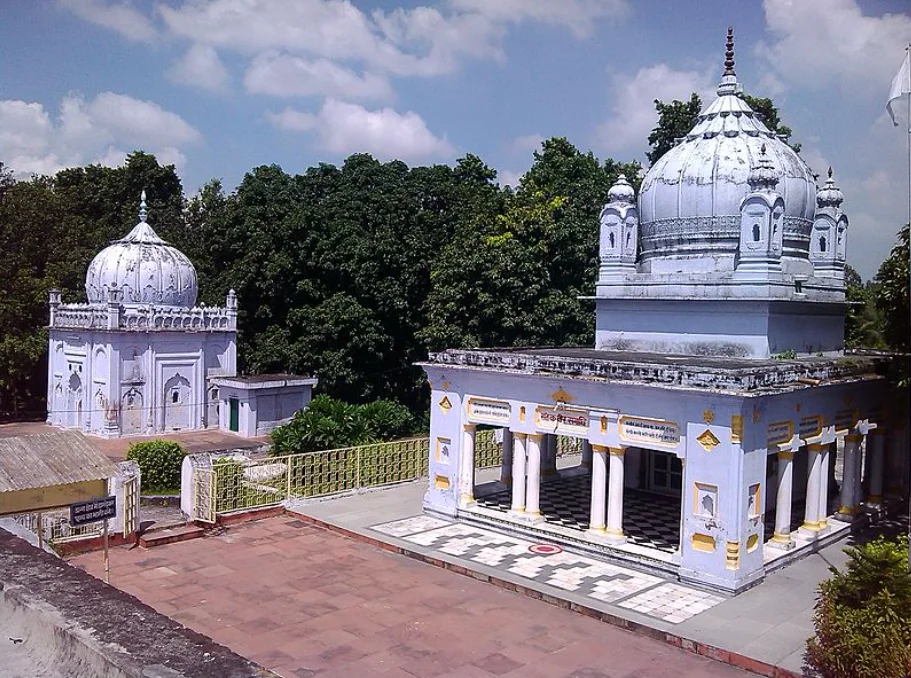
Source: Wikimedia Commons
Final Journey and Legacy
Kabir traveled extensively during his long life. According to sources, his health had deteriorated to the point where he could no longer continue singing songs in honor of Ram. In his final moments, he visited the city of Maghar in Uttar Pradesh. Tradition holds that upon his death, there arose a dispute between Muslims and Hindus regarding whether to bury or cremate his remains. A miraculous incident occurred under his shroud: half of the flowers were burnt at Kashi and the other half were buried at Maghar. Kabir Das unquestionably passed away at Maghar, where he was buried.
I have left Benares, and my intelligence has diminished.
I lost my entire existence in Shivpuri, yet I arose and traveled to Maghar at the time of my death.
I’m a Yogi and Bairagi, O my King.
I am not sad when I die, nor am I apart from Thee.
The violin is always ready, the mind and breath are the drinking gourd.
The violin notes are undefeated, the string has solidified, and it does not snap.
Sing, sing, O bride, for my husband, King Ram, has arrived to my home with a lovely song of blessings.
ALSO READ: Bithoor and its History

